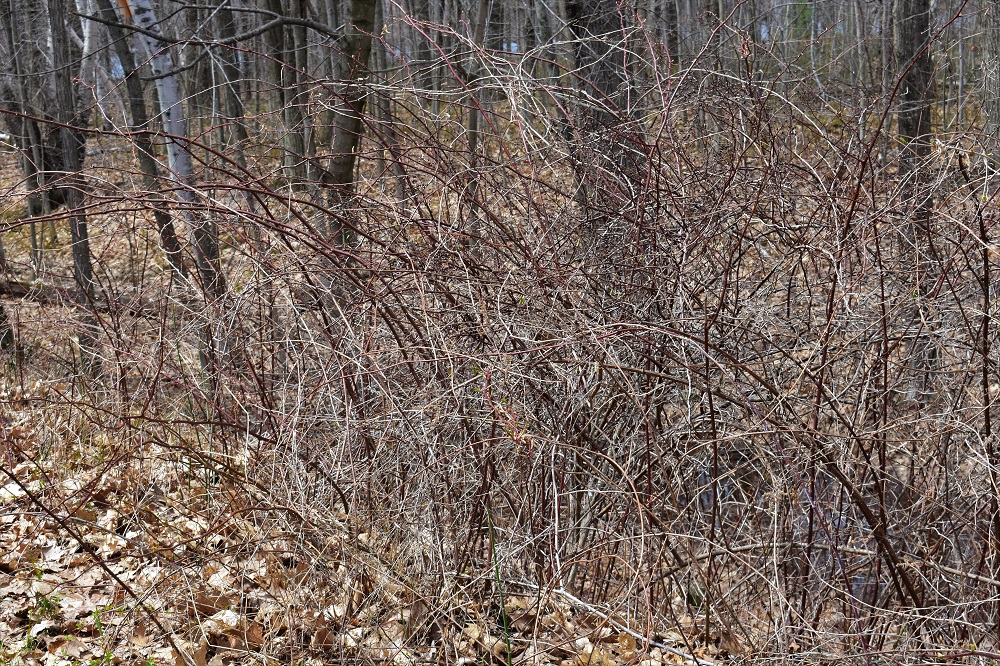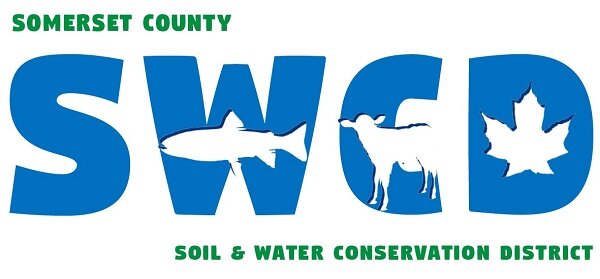Spring is the Time to Look for Invasive Plants
Spring is finally here! This short window between snow and black flies is the perfect time to get out and see what’s happening in your woodland. A number of our non-native invasive plants are easy to spot this time of year, giving you the opportunity to identify potential invaders and begin to educate yourself on the management choices to be made.
I took a short lunchtime walk yesterday (along the Kennebec, not at the Yankee Woodlot) and readily found these five woody non-native invasive plants. I found herbaceous non-natives as well, but that’s a post for another day!
The non-native honeysuckles are one of the most ubiquitous invasive plants in our woodlands. They are also one of the earliest woody plants to leaf out. In early spring, if you spy green shrubs in the understory, they are quite likely non-native honeysuckle.









There are a number of species to choose from, most commonly the shrubby honeysuckles: Morrow (Lonicera morrowii) and Tartarian (Lonicera tartarica). Shrubby honeysuckles are considered invasive in Maine by the Maine Natural Areas Program, while a third species, Japanese honeysuckle, is categorized as a likely invasive. In addition to the early emergence of leaves, the non-natives feature a distinctive shaggy bark (especially on older plants), and a hollow pith. This tube in the center of the stem is solid in native honeysuckle species. University of Maine Cooperative Extension offers a great series of fact sheets on these and the other invasive plants; just follow the links in this post.
Japanese barberry (Berberis thunbergii) may also contribute an early green splash of color. As the name suggests, these dense woody shrubs have spines, or barbs, on arching canes that can form a dense thicket.
Before the leaves come out is also a good time to identify several other common non-native invasive plants. These plants have a distinctive shape or silhouette that can be readily spotted in the clear viewing of early spring.
Multiflora rose (rosa multiflora) tends to form expansive, tall mounds of red, arching and most often thorny canes.
Asiatic bittersweet Celastrus orbiculata is an aggressive woody vine that wraps around trees, climbing up into the overstory.
Japanese knotweed Fallopia japonica forms robust, dense stands. Its dead, brown stalks persist through the winter.
In addition to these easy finds, my 20 minutes of invasive hunting left me with a half-dozen deer ticks on my clothing. Interestingly, there is increasing evidence that non-native plants are creating habitat for ticks. They reduce habitat for our native wildlife and pollinators, like butterflies and birds, by replacing native trees, shrubs and wildflowers. They create monoculture stands devoid of biodiversity, which I think of as nature’s insurance policy. Non-native invasive plants have the capacity to destroy what you value in your woodland, so don’t delay in taking a look.
If your woodland walk turns up an invasive plant or two (sadly, we’re pretty certain it will), there are a host of resources available to help you make management choices. The Somerset County Soil & Water Conservation District has partnered with the Maine Natural Areas Program and a number of other Districts across the state to provide guidance to woodland landowners. Contact us at 207-474-8323 x3 or email info@somersetswcd.org. Another good place to start is the Maine Natural Areas Program web site. It provides a wealth of information about invasive plants identification, management and prevention.
